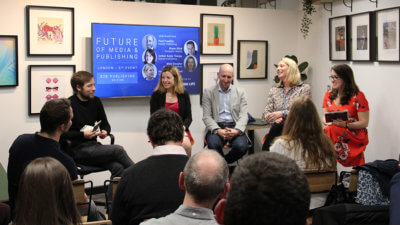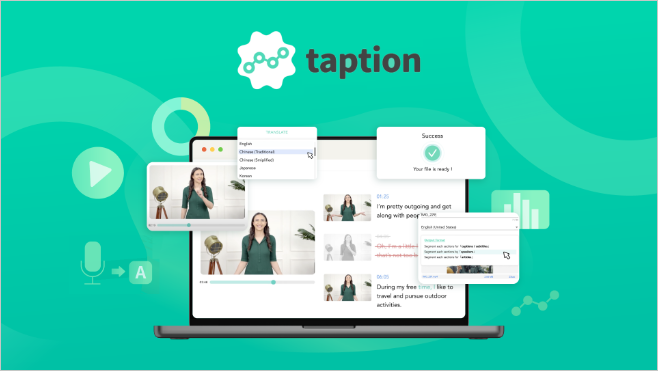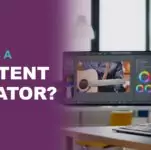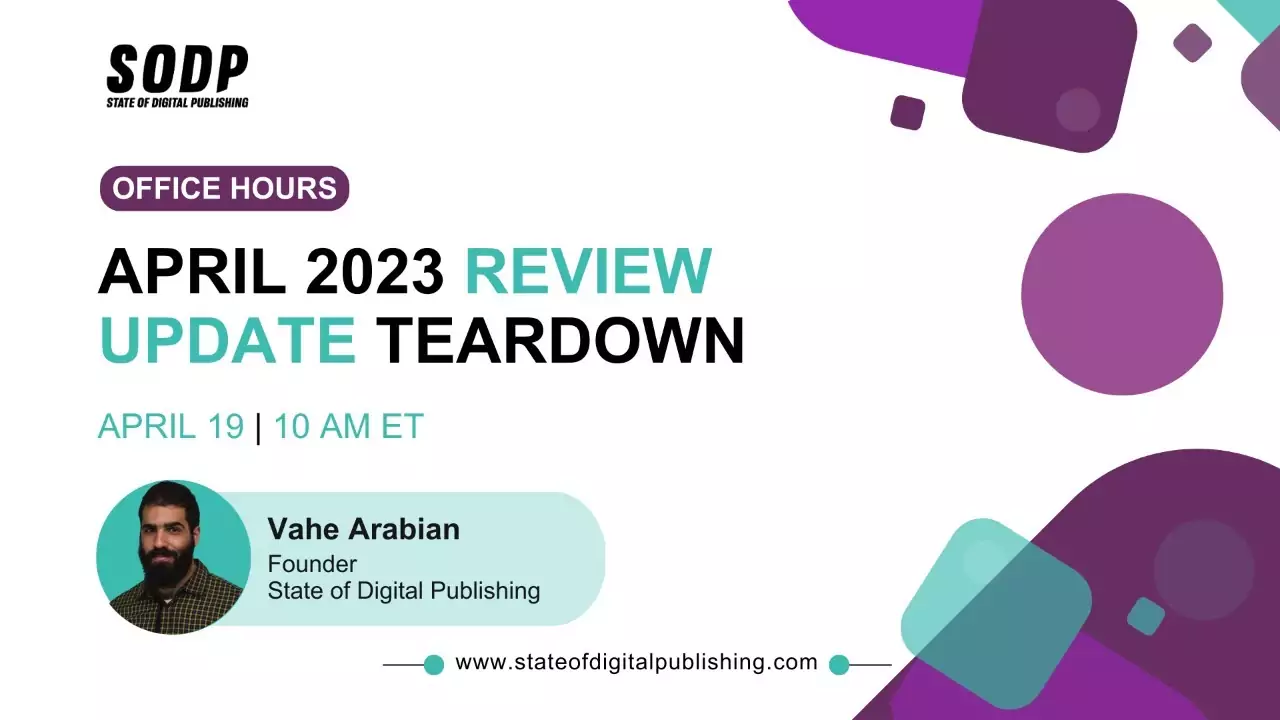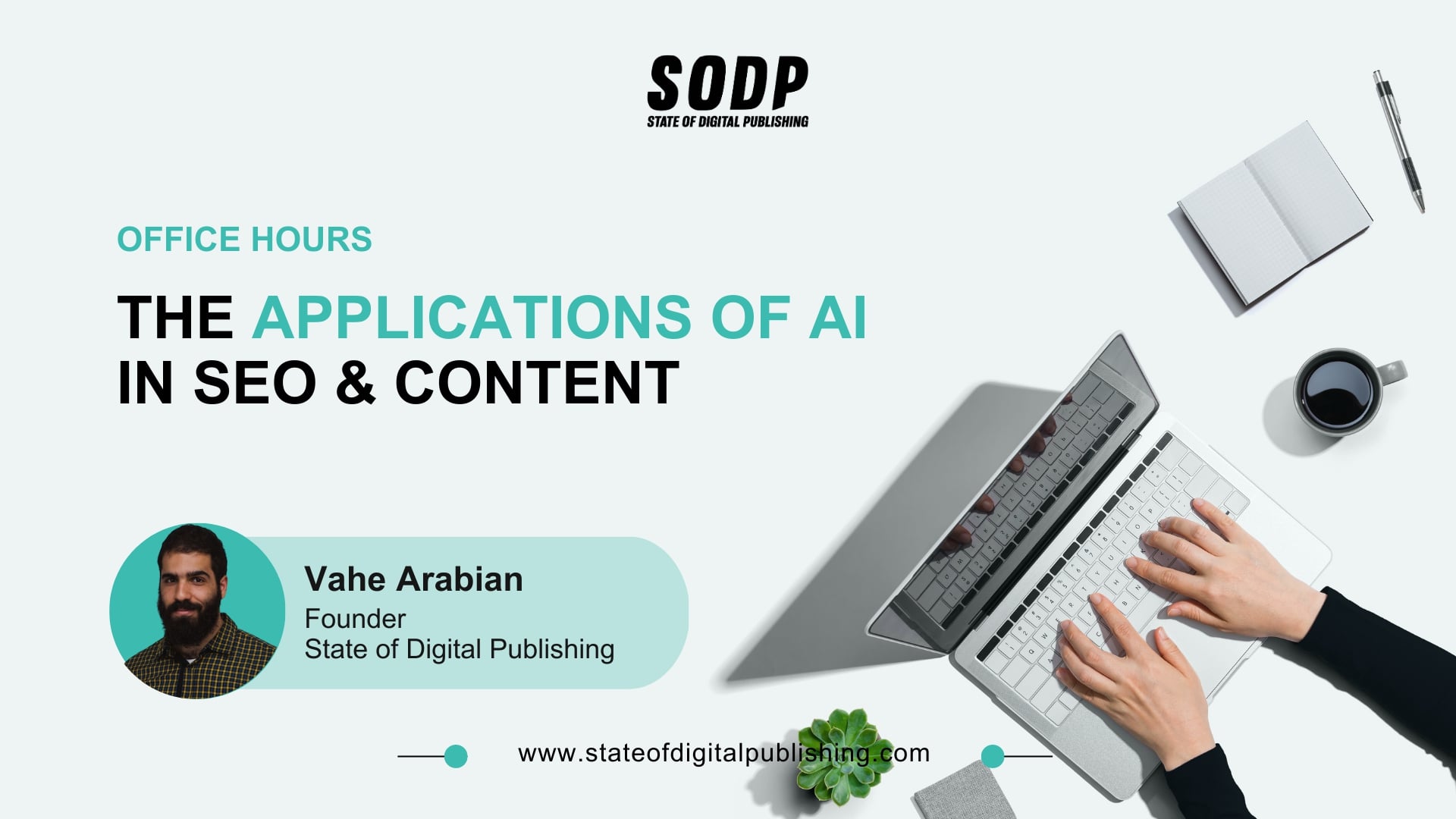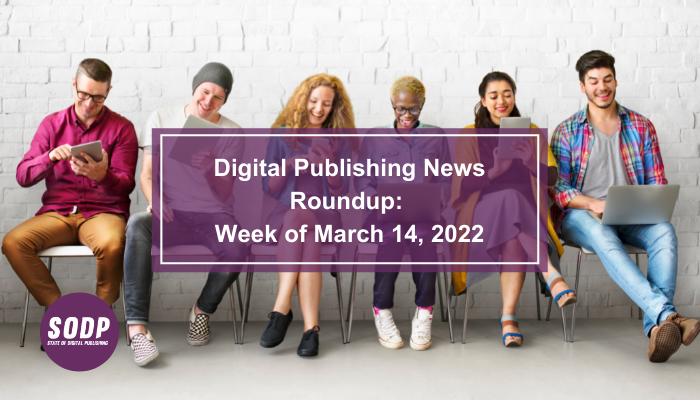I’m Robbert, Head of Events at Bibblio, and we invited the publishing community in London for our first-ever B2B event to talk digitization and new revenue models.
On 7 March 2019, Bibblio hosted the fifth edition of the ‘Future of Media & Publishing’ event at Work.Life, Fitzrovia.
The evening featured a presentation by Bryan Glick (Editor-in-Chief at ComputerWeekly) and a panel of contributors – Mary Douglas (Head of Engagement at Architects’ Journal), Paul Franklin (Group Publisher at Dennis), Helen Olsen Bedford (Publisher at UKAuthority) and Esther Kezia Thorpe (Senior Content Marketing Manager B2B at Dennis). My colleague and co-founder of Bibblio, Mads Holmen, played the part of panel moderator.
Read on for the evening’s highlights and grab Bryan Glick’s presentation slides too.
A journey from print to web-only
Bryan Glick shared the story of the digital transformation of Computer Weekly, which started as a weekly technology newspaper in 1966. This makes them rather unique as they’re older than most of the companies they write about, Bryan quipped. In 2011 the publication was acquired by TechTarget. They then made the change to become an all-digital publication, with Bryan presiding as the Editor-in-Chief:
“When I came on-board in early 2010, they’d had a decade of print advertising decline. The job ad market had moved to other places online and our then clickbait website didn’t make up for this. At that time, the Editor-in-Chief’s job was very much about managing decline. They brought me in to go all digital and challenged us to try and become a profitable digital publication.”

Bryan discussing the digital transformation of his publication.
Publisher or data analytics business – why not both?
So what was Bryan’s strategy to turn things around? Firstly, they felt that there was no way to build a sustainable business with display ads as the main revenue source. However, there was very adequate money in truly harnessing the community of IT professionals who were visiting the site. There was an issue though, which was captured in this great quote by Bryan:
“In print you know all your readers, but not what they read. On the web it’s the other way around.”

Bryan looking back to where they were before they overhauled their business model.
In the simplest terms, the solution Bryan and his team chose to pursue was to find a way to combine reader demographics with what they are reading. To make this work they implemented a free membership model, giving users access to premium content. They then had an overview of what each user read. This opened up great revenue streams for Computer Weekly, Bryan explains:
“80% of our revenue comes from selling marketing intelligence and leads to IT companies. We are now a data analytics business. We’re building up a membership base of IT professionals, including people who make buying decisions, and we register the topics they’re reading about. We then work with brands like IBM, for whom we market their whitepaper to specific Computer Weekly members, and the users give consent to be approached with more information afterwards. IBM pays us for this ‘lead-generation’ opportunity.”
The rest of the generated revenue is from online ads. Bryan says they don’t do many of them – the ones they do sell, they sell for a premium price.
Continuous revenue and profit growth
The overhaul of the business model at Computer Weekly has brought them to where they are today: they are profitable and have room to invest in regionally focused content for a number of European and international markets. And the B2B publication means business: in February 2019 they launched ComputerWeekly.de. To finish it off, Bryan drops some numbers:
“On average, we’re delivering over 1 million page views a month. For at least the last 5 years we’ve had revenue growth every year – and we are making a profit too. When we sent out our last print magazine it went out to 90,000 subscribers. Now we still do a weekly magazine in pdf, and that currently goes out to 200,000 subscribers.”
Want to know more about the digital transformation of this B2B publisher? Download Bryan’s presentation
Impacting the bottom line of B2B publishing businesses
Next up at our event was the panel, which covered the impact of social media (spoiler: it’s a mixed bag), the importance of newsletters, and how events are driving more revenue than ever.

From left to right: Mads fires an amusing question at Mary, Paul, Helen and Esther
On the topic of audience acquisition, Mads asked our panel how much of their traffic is driven by social media. Helen goes first and says that almost a third of the traffic to UKAuthority comes through social media:
“This is split between Twitter and LinkedIn. The end-users are on the former, our buyers on the latter. Lots of our business comes directly through LinkedIn – brands reach out to us to find out how they can get involved.”
The Architects’ Journal website receives most social traffic from Twitter, powered by tweeting out stories that generates a wider audience. Mary remembers an article they published about the demolition of a car park.
“There was one tweet that nearly got 300,000 impressions, which is mega for us. That brought in a lot of traffic. Most of them would come and go quickly. But they are still served an ad.”
Social hardly plays a role of importance for Dennis, traffic or otherwise. Esther explains that they haven’t found Twitter to be helpful to reach IT professionals – neither is Facebook. She does remain somewhat hopeful for LinkedIn:
“LinkedIn Groups were a dynamic place where loads of conversations were going on. Two years ago they switched that off. Everyone who has a LinkedIn Group knows that the engagement there has plummeted. They are looking at resurrecting them, but they have been promising that for the last six months.”
Paul from Dennis adds his sceptical view on social media generally. He says that when you look at the amount of money that has been “piled into social” over the last few years versus the engagement it generates, it doesn’t add up for him.
Newsletters and other emails deliver
So what does bring them the engagement they are looking for? It’s newsletters, mostly in the format of daily updates and weekly/thematic roundups. Paul mentions they customise them by themes, and on average they get around 15 to 20% open rate.

Esther explains how offering lead generation brings in most of the revenue
The newsletters often include a sponsored link to a relevant whitepaper, and the lead generation on the back of that generates 75%+ of the revenue for Dennis. Esther describes how this works:
“The brands hand their white-papers over to me, I read these and create a marketing strategy around them, using our own stories and email database. We know our audience well, so we can deliver targeted campaigns.”
A growing revenue stream for them is helping brands to create whitepapers and other types of content, such as micro-sites or integrated content solutions.
How important is SEO?
According to Parse.ly’s referral dashboard, Twitter currently drives 2.4% of all traffic to publishing sites. Flipboard does 2.3% and Facebook is responsible for 21%. No one can hold a candle to Google though, with more than half of all referral traffic coming through their search. So we asked our publishers how important SEO is for them.
With 50% of their traffic coming from organic search, Mary from Architects’ Journal mentions she wants their journalists to look at trending topics and create stories around those more often. And the stories that are created should be written in an evergreen style or set up in a way that they’re easy to update:
Content from our partners
“We want to build up more evergreen stories. Our journalists are not in the habit of writing too much of it. Our website is really built on the daily news. We do have features, but these do end up mostly in our print edition. But if you Google ‘how far away from a house can you plant a tree?’ one of top hits is a quite ancient article from our site.”
Paul from Dennis says they are doing plenty on SEO. A couple of years ago they decided to slightly change their tack and now take a niche, quality keyword approach:
“To target a quality audience we’re going for keywords such as ‘CRM’ and ‘ERP’. After the audience finds us through these niche terms, they are met with long-form content on our site. This strategy helped drive us up to 5 times the engagement we had before.”
UKAuthority doesn’t rely much on Google Search, organic or otherwise. Helen says this is because they have a slightly obscure kind of content. Stuff “you wouldn’t Google”. Around 40% of their traffic is direct, 30% comes from social and another 30% through email.
Events are paying the bills
Earlier in this post, we touched upon lead-generation as a big revenue stream for both Computer Weekly and Dennis. Talking about diversification of revenue, Helen spoke enthusiastically about their virtual events branded UKA Live:
“We grew out of a research and market information company, so we never had programmatic advertising and it’s not going to give us the revenue we need. We run our business off our data in the form of whitepapers and events. Funnily enough, our virtual events UKA Live have a higher profit margin than our physical events. Our virtual events are not webinars, we film in a TV studio and we broadcast live on a Vimeo stream. People watching can ask questions too. Massively nerdy, great, and a growth area. We also re-purpose the content into smaller videos, podcasts and long-form reads. We sell a solo sponsorship for every broadcast for £6k.”
Mary refers to events as an important revenue stream, followed by their print edition. Their digital presence is crucial in driving people to both and it’s growing.
Panel bonus: the membership model at Architects’ Journal
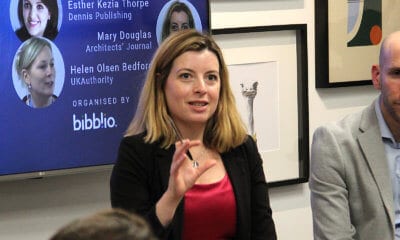
Mary explains how Architects’ Journal metered paywall works
“All our focus online is on getting people to register and then become a paid subscriber. As an unregistered user, you get one article a month for free. If you want to read a bit more you can register. If you want unlimited content, including in-depth building studies and the latest regulatory and legislative updates, you have to subscribe to a paid plan.”
She feeds back to the editorial team what people are reading via Slack and daily meetings. They’ve taken this on-board and have written more content on topics that people who visit the site engage with. “In the last two years they’ve had 25% growth in traffic to our site”, Mary states. “Currently, a third of page views are from subscribers.”



